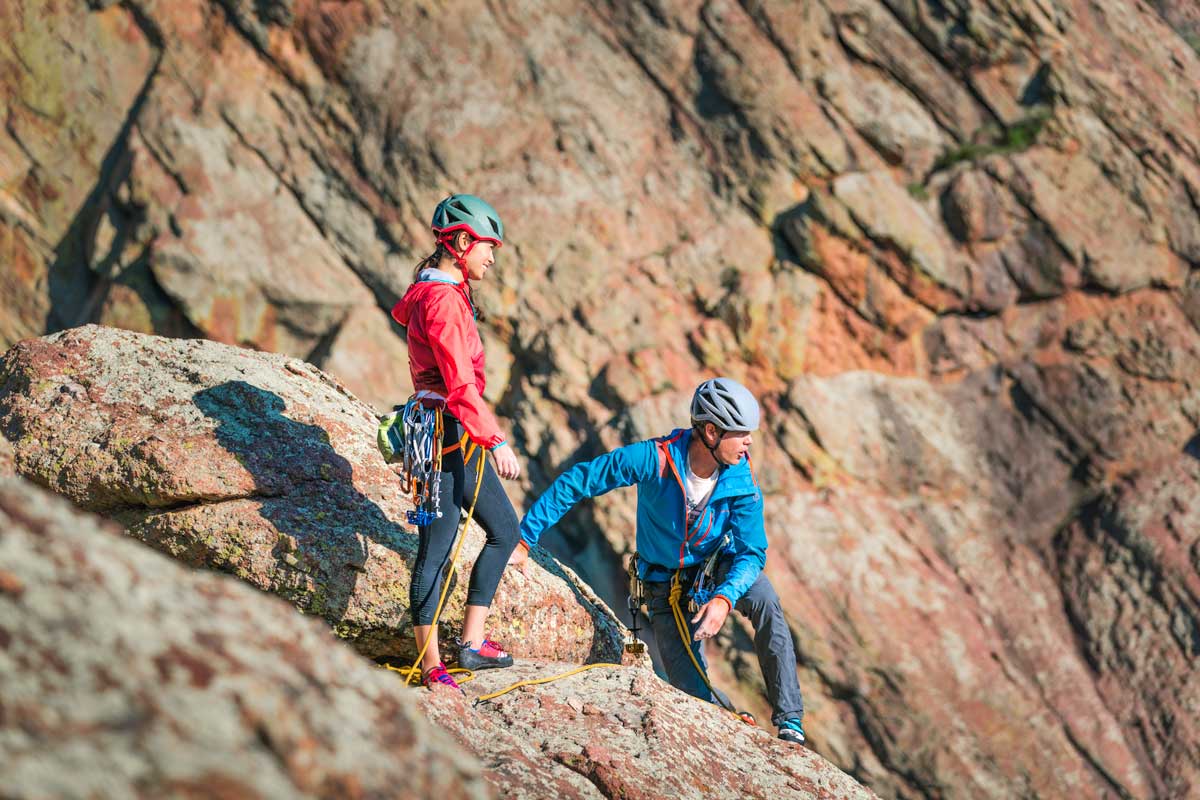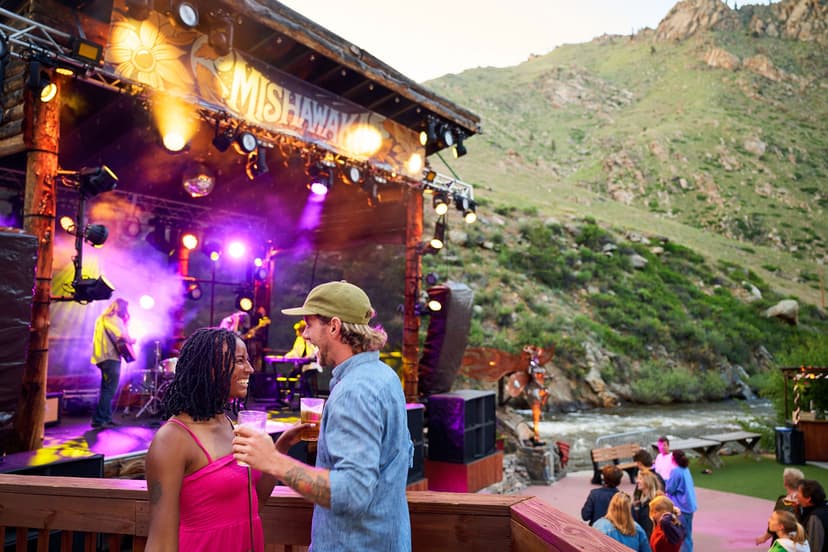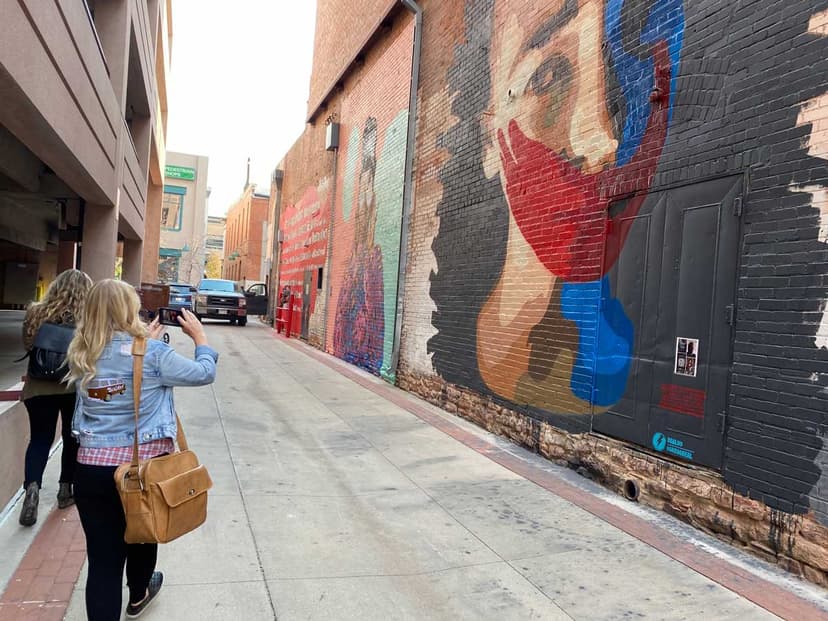From the crisp air against your skin to the endless opportunities sprawling before you on over 8.3 million acres of glorious public terrain, becoming immersed in nature is an exciting adventure. Whether you’re a beginner or a pro, Colorado’s backcountry offers thrilling opportunities to take your skills to new heights and can be tremendously rewarding when you minimize risk by planning ahead.
No matter your chosen activity — from hiking and camping to rock climbing and more — if you plan to head off the beaten path, make sure you do so responsibly. Find your confidence in exploring the Colorado backcountry by being prepared and having the proper training, or by exploring with a certified backcountry guide.
Follow these guidelines for safer recreation and the best experience possible on our unmanaged terrain.
Snow on the ground? Find winter-specific backcountry safety tips.
Know Before You Go
Traveling into Colorado’s remote landscapes might be a bucket-list item for some, but it shouldn’t be done on a whim or without proper planning — like checking the weather forecast, packing the necessities and notifying someone of your plans. It’s important to also know the risks and how to safely avoid or navigate them.
Recognize the Risks
No matter your chosen activity, traveling through Colorado’s backcountry can be inherently risky. Potential hazards include, but aren’t limited to, getting lost, being struck by lightning, becoming injured and experiencing hypothermia. Dangerous backcountry conditions can also be experienced no matter your chosen activity, and they include things like thunderstorms, active wildfires, falling and fallen debris, ash pits and flash floods.
That’s why preparation and having a good understanding of your group’s abilities and limitations are so important when picking an activity.
“Trouble is difficult to predict, but the best way to prevent it in the first place is to carry the proper clothing, water, food and gear for situations you don’t expect,” said Jay Christianson, El Paso County Search and Rescue member and Colorado Search and Rescue (CSAR) public information officer. “Additionally, traveling with friends, or at the very least leaving your plans with responsible friends, is a great way to minimize risks.”
Check Weather Predictions
Colorado’s known for its rapidly changing weather patterns. It can be sunny and 70 degrees one minute, then suddenly storming or possibly even snowing the next — no matter the season — especially if you’re at high altitudes.
Planning ahead and keeping an eye on changing weather will ensure the safest and most enjoyable time possible. Your trip experience deserves the best conditions, so pair your plans with an optimal climate and remain flexible. Seek out hourly predictions for where you’re headed using the National Weather Service and explore alternative destinations when extreme weather is expected.
“There is a saying, 'If you don’t like the weather, just wait five minutes' — while that might not be 100 percent true, it certainly is the case that it can go from summer to winter very quickly, ” Christianson added. “Elevation is another big factor in rapid temperature and weather change.”
Keep in mind that Colorado’s mountains are notorious for severe thunderstorms that can arrive swiftly in the afternoon. So, if you’re heading into the mountains for a scenic hike, reduce your risk by starting early and planning to be off peaks and ridges and away from trees before noon.
Caught in a thunderstorm? Move away from areas like high-elevation terrain (peaks and ridges), tall objects (like trees), the windward side of a mountain (where the storm blows in) and water. See the National Weather Service’s Lightning Safety Tips.
“If you have to turn around, no worries,” said Mountain Rescue Aspen’s rescue leader coordinator Scott Messina. “The mountains will always be here. Enjoy the journey.”
Map It Out
Just like it’s important to watch the weather and plan accordingly, it’s also important to map out your trek. Do research ahead of time and make sure you’ve downloaded a map to your phone (while you still have service). Once you’re off the grid, you can expect your smartphone navigation (and phone service in general) to be spotty or nonexistent. Trail-mapping resources, like the free Colorado Trail Explorer (COTREX) app, are handy. These types of resources can provide offline map navigation, descriptions and reviews that give you an indication of trail conditions and difficulty. But it’s always a good idea to bring a paper map so you don't have to worry if your phone battery dies.
To simplify a rescue should you go missing, make sure you tell someone where you’re going, the route you intend on taking and when you’ll be back — and don’t deviate from that plan. You can also fill out a form and leave it on your car.
Depending on the type of trip you’re taking, you may also want to bring an emergency electronic-signaling device. Cell phones don’t always work in the backcountry, so carry an emergency communication device — like SPOT, PLB or inReach. Practice with your device before heading out to ensure that you feel comfortable and know how to use it. The best kind of communication device is one that allows for two-way communication, so you can text your friends with updates. In the case of a true emergency, you can also let search-and-rescue teams know the specific nature of your emergency. This helps a rescue team plan and allocate resources.
See a list of 10 essentials for traveling in Colorado's backcountry.
Understand Signs of Altitude Sickness
Especially when you’re coming from a much lower elevation, Colorado’s high reaches might make you sick due to there being less oxygen in the air. Practice patience by resting for at least 24 hours or longer at a lower elevation before heading up into the mountains. Drink two times the water at elevation to stay hydrated, and avoid alcohol while you’re acclimating.
“Be aware of the significant impact your fitness can have on you and also how well you acclimate and perform at altitude,” Christianson said. “Know the skills of those around you and always plan for the comfort and safety of the lowest-skilled member of the group.”
Common symptoms of altitude sickness include a mild headache, dizziness, shortness of breath, fatigue and issues sleeping. Emergency symptoms, which can be deadly, include a rapid pulse, loss of balance, slurring words, lack of coordination, irrational behavior and even cerebral and/or pulmonary edema. If you begin to feel the symptoms of altitude sickness while in the backcountry, you must descend to a lower elevation and seek medical treatment if necessary. Altitude sickness affects everyone differently and can strike anyone anytime regardless of age or physical condition.
What to Do in An Emergency
If you’re in a true backcountry emergency, whether you’re lost or injured, call or text 911. Have an app on your phone, like My GPS Coordinates, to get location coordinates to report to dispatch. Even if your phone doesn’t have a signal, it’s important to give this a try. Sometimes a text will go through in areas where a call will not. You can also use your emergency electronic-signaling device if you brought one.
Not sure where you are? First and foremost, stay calm and stop where you are. Then think, observe and plan. Without going far off your original route, look for a familiar landmark or location. If you’re truly lost, stay put, hydrate, eat some food and put on some extra clothing to stay warm. Use your whistle to alert anyone nearby of your presence and consider building a campfire if you can do it carefully and there isn’t a fire ban (check before you go for county-specific fire-restriction info). Rescuers can usually get to you within 24 hours of being alerted, though it can take longer, so it’s important to seek shelter and wait patiently.
Much of the above applies to injuries as well. If there are people nearby, ask them for help. Be prepared with a first-aid kit and know how to use it. Try to call or text 911, or use your personal-signaling device, if the injury or illness is serious and requires swift medical attention.
Seek Backcountry Education & Training
There are many types of education opportunities available to outdoor enthusiasts — from basic backpacking training to professional-level certifications. No matter your interests (hiking, mountain biking, rafting, etc.), you should select a class based on your activity and skill level.
Colorado has plenty of options when it comes to guides and outfitters that are trained to keep you safe. Find the right guide for you with the Colorado Outdoor Recreation Industry Directory.
Want to learn more? Colorado Mountain School, Colorado Adventure Guides, Mountain Skillz, The Mountaineers and Colorado Mountain Club all offer backcountry-education opportunities.
Remember: Don’t venture out unless you know what you’re doing or are with someone who does. Bring an experienced friend, find a mentor or use a professional guide. A local coach that can help you hone your skills over time — or hire an American Mountain Guides Association-certified guide who is responsible for keeping you safe.
Recreate Responsibly
Now that you have your adventure plans in place, it’s time to hit the road. Follow these to-dos for the trail and know what to do if you’re caught in an emergency situation.
Trail Talk
- Blistered or sore feet can impact your mobility and ruin a trip, especially if you’re far from your car. Always wear footwear that’s appropriate for your activity. For instance, if you’re climbing a fourteener (a mountain taller than 14,000 feet), wear hiking boots that have already been broken in to avoid blisters and leave the flip-flops at home.
- Dress in layers for any kind of weather — sun, rain, wind, sleet and even snow — and slather yourself in sunscreen. The sun’s rays are strong here, especially at higher elevations and even when it’s overcast.
- Carpooling to a trailhead is definitely encouraged. Popular backcountry spots can be crowded at peak times like weekends and holidays. If you arrive at a trailhead parking lot and it’s full, please don’t park on the road. Have an alternative recreation spot in mind and head there instead.
- Do current and future travelers a favor by keeping the backcountry pristine. Use the Care for Colorado Leave No Trace Principles as your guide to pack out your trash and leave the area better than you found it.
- If camping is your kind of backcountry fun, knowing how to responsibly manage a campfire is paramount. Even a small fire can get out of control and turn into a wildfire if the conditions are not right or your fire is not tended and put out completely.
- Colorado’s search-and-rescue services are free of charge, so never hesitate to call. But you can definitely expect a bill for a medical helicopter or ambulance if it’s required. That’s why you should have travel insurance that covers evacuations. You can also purchase a BSAR card, which is not insurance, to help support search-and-rescue services ahead of time. A one-year card is $3 and helps fund expense reimbursement for search-and-rescue teams across the state.








